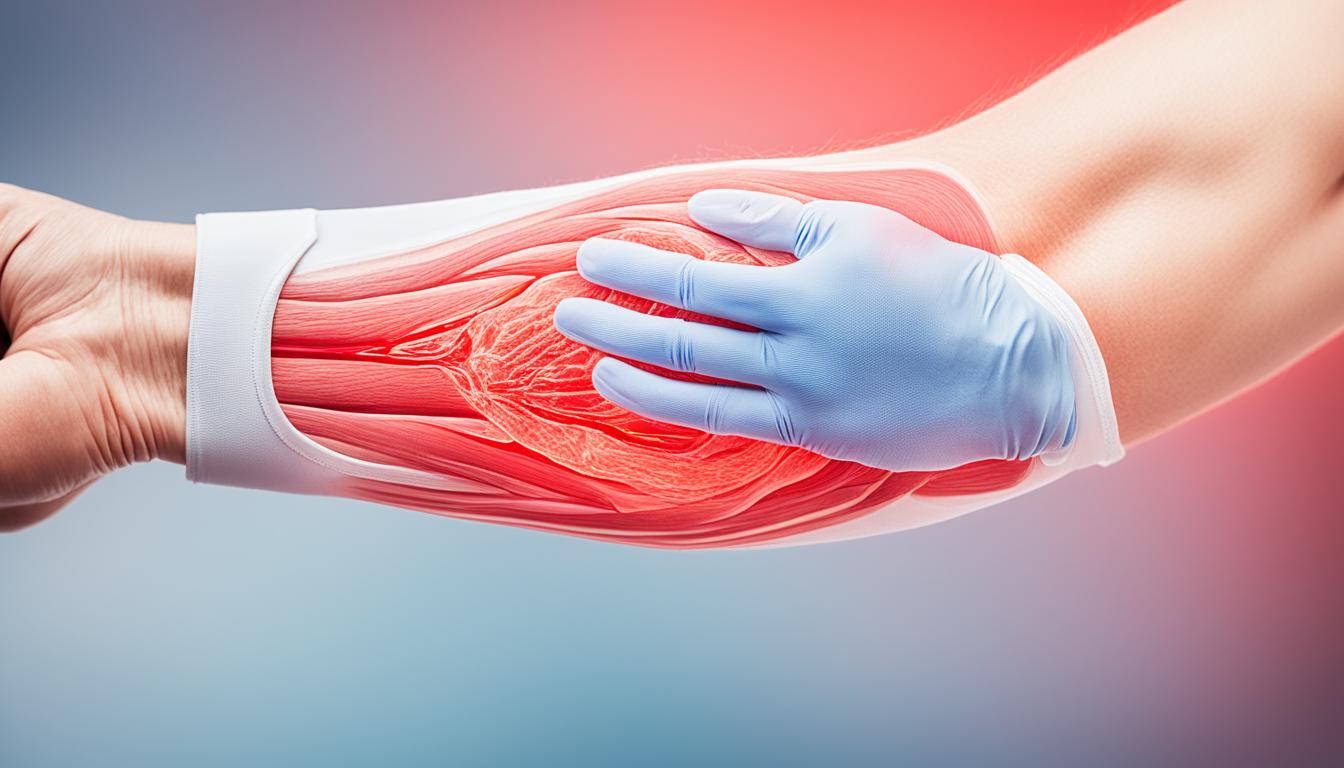Tendinitis, or tendonitis, happens when a tendon gets inflamed, usually from overuse or injury. It occurs in body parts like the knees, elbows, wrists, and fingers. Swelling, pain, and trouble moving the joint are common signs. Tendinitis often happens from doing the same movements over and over again, like in sports or some jobs.
A complete checkup is needed to know if someone has tendinitis. Doctors might also use images like X-rays or MRIs to see the damage. This helps them check the inflammation level and find any injuries to the tendon.
Treating tendinitis can start with simple things and move to more complex therapies. Stay off the affected area, adjust activities that strain the tendon, and medications to reduce pain and swelling are common steps. Seeing a therapist and doing special exercises can make things better too.
For tougher cases, doctors might suggest injection treatments. These can include shots of corticosteroids, which fight the swelling, or PRP injections, which try to help the body heal itself. Stem cell therapy is also becoming an option, as it might help the tendon heal better.
If none of these treatments work, surgery might be the next step. This can involve fixing or removing the damaged tendon using different methods, like open surgery or arthroscopy.
Key Takeaways:
- Tendinitis comes from overusing or injuring a tendon, leading it to get inflamed.
- Its common symptoms are swelling, pain, and difficulty with joint movement.
- Getting the right diagnosis means a thorough checkup and sometimes imaging tests.
- Treatments start simple with rest and meds but can go up to surgery in severe cases.
- For some severe cases, surgery might be needed if other treatments don’t work.
Treatment Options for Tendinitis
Tendinitis happens when our tendons get inflamed. It needs the right treatment to make the pain go away and speed up healing. The kind of treatment for tendinitis changes based on how bad it is and where it affects you. Let’s look at some common ways to deal with it.
Conservative Treatment
If it’s not so severe, you might just need rest and some changes in what you do. Rest helps the tendons heal. And, cutting back on activities that stress the tendons can stop the pain from getting worse. You might also take over-the-counter or prescription anti-inflammatory drugs to help with the pain and swelling.
Physical therapy can also be really helpful. A therapist will come up with exercises just for you. These exercises aim to make your muscles stronger and your joints more stable. When your body is more balanced, it puts less strain on the tendons.
Injection Therapy
For more severe cases, your doctor might suggest injections. Corticosteroid shots can lessen the pain and swelling quickly. But, there’s also the option of PRP, where they inject a concentrated form of your blood into the tendon to spur healing.
Treatments using stem cells are also something scientists are looking into. Stem cells could possibly help in fixing the damaged tissues and make your tendon better. But these treatments are still being researched to know more about how well they work and how safe they are.
Surgical Intervention
When everything else fails, surgery might be needed. The specific surgery you might get depends on which tendon is affected and how bad it is. You might have classic surgery, done through a big cut, or some less invasive methods that use small cuts and special tools.
Remember, surgery is usually the very last thing to consider. Often, trying out other methods first can improve the pain and let you move better.
Always talk to a doctor to figure out the best plan for getting over tendinitis. Effective treatment can help get rid of the pain, lessen the swelling, and make you move more comfortably. Getting the right help is key to feeling better.
Conclusion
Tendinitis, or tendonitis, is when your tendons become inflamed. This can cause pain, swell a joint, and make moving it tough. Getting the right diagnosis and treatment is key. This helps ease the symptoms and stops more harm.
To diagnose tendinitis, your doctor will check you over and might use X-rays or ultrasounds. If you’re diagnosed, what you need for treatment depends on how bad and where the tendinitis is. Rest and some meds can help with pain and swelling.
For harder cases, your doctor might suggest physical therapy or special shots. Research is also looking into using stem cell therapy for tendons. This might help heal them.
Sometimes, surgery is the only option if nothing else works. But, there are many types of surgeries, from big ones to small cuts like arthroscopy or tenotomy.
Always talk to a doctor or specialist for the right care. With the right treatment, most people with tendinitis get better. Then, they can go back to doing what they love.

